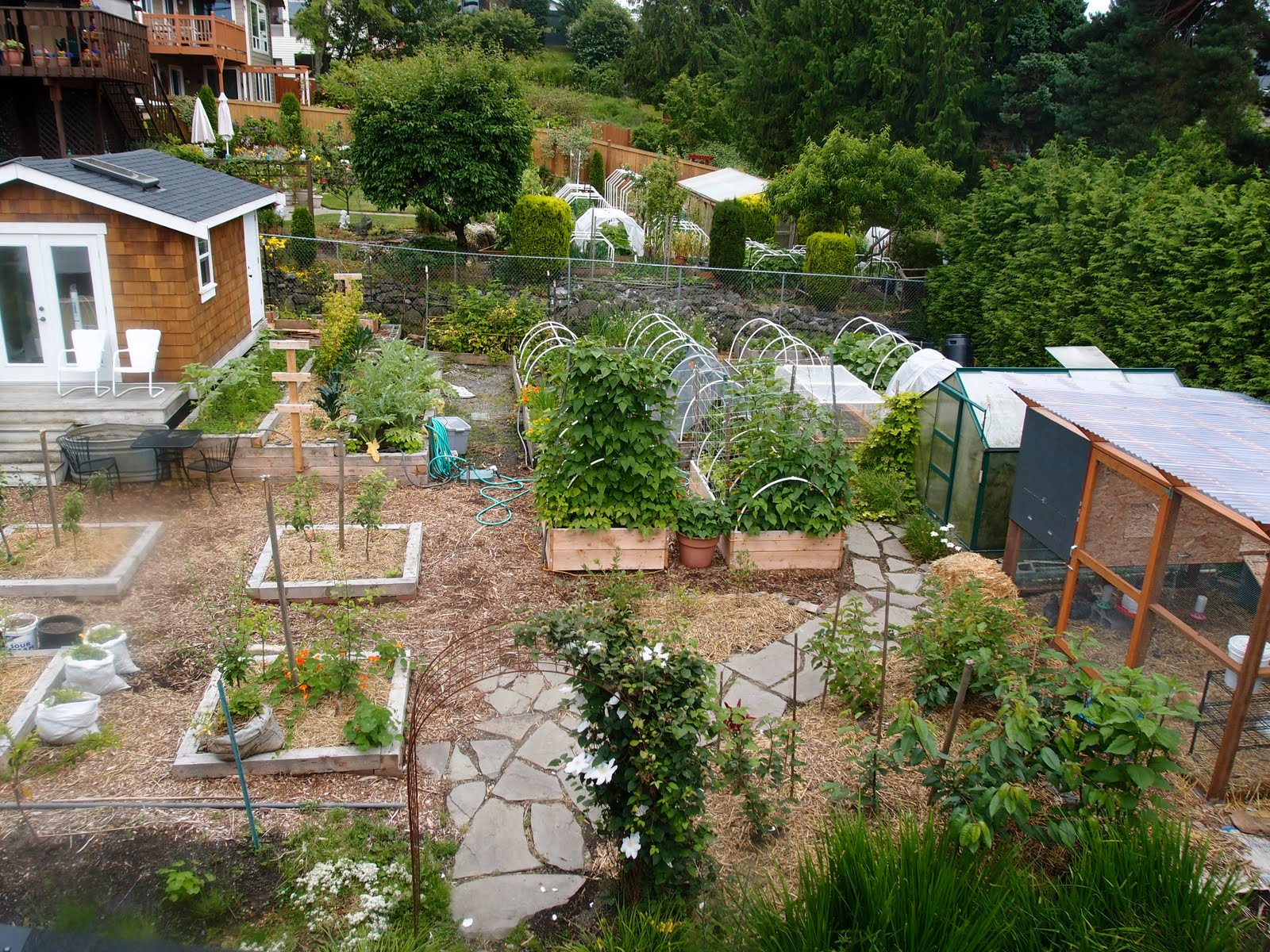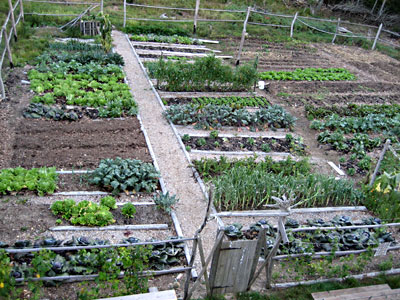Explore the Best Practices for Homestead Gardening at Any Skill Level
Explore the Best Practices for Homestead Gardening at Any Skill Level
Blog Article
Discover the Secrets to Creating a Attractive and Productive Horticulture Space
Creating a efficient and beautiful gardening space is not merely a matter of growing blossoms and veggies; it requires a strategic approach that encompasses numerous critical components. From picking the right place based on sunlight and soil kind to thoughtfully developing your layout and picking ideal plants, each choice plays a critical role in the success of your yard.
Selecting the Right Place
Selecting the excellent place for your garden is vital to its success and general visual charm. The very first step in this procedure entails analyzing sunlight direct exposure, as many plants call for a minimum of 6 hours of direct sunshine daily (Homestead Gardening). A south-facing garden normally receives one of the most light, while shaded areas can hamper growth and flowering
In addition, think about dirt quality and drain. Well-draining dirt is vital to prevent waterlogged origins, which can lead to plant illness. Performing a soil test can supply useful information pertaining to pH levels and vitamins and mineral content, enabling you to change the dirt accordingly.
Moreover, closeness to water sources is one more aspect to weigh - Homestead Gardening. Having very easy accessibility to a hose pipe or irrigation system can streamline the watering procedure and urge consistent plant care. Wind protection is likewise crucial; placing your yard near structures, such as walls or fences, can protect it from extreme winds that might harm fragile plants
Last but not least, consider accessibility for maintenance and harvesting. A well-placed garden enables practical gain access to, making sure that you can conveniently often tend to your plants without creating excessive stress and anxiety or disruption. Thoughtful area option lays the structure for a growing yard.
Picking Plants Intelligently
When picking plants for your yard, it's crucial to take into consideration variables such as environment, dirt problems, and personal preferences to ensure a effective and harmonious room. A detailed understanding of your local environment will certainly assist you in choosing plants that flourish in your specific setting. Picking drought-resistant ranges is useful in arid areas, while moisture-loving types may be extra proper for areas with high rains.
Soil conditions are similarly vital; conducting a dirt examination can expose pH levels and vitamins and mineral material, allowing you to select plants that will prosper. Native plants are often a superb option, as they are typically well-adapted to neighborhood soil kinds and require much less maintenance.
In addition, consider your gardening objectives. Are you going for an ornamental display screen, a vegetable yard, or possibly a mix of both? This will affect your options substantially. Lastly, show on your individual preferences-- choosing plants that reverberate with your aesthetic preferences will certainly enhance your satisfaction and commitment to preserving your yard. By thoroughly reviewing these elements, you can develop a successful and varied plant selection that elevates your gardening experience.
Creating Your Yard Layout
With a thoughtfully chosen plant selection in hand, the following step is to create a garden layout that makes best use of both beauty and functionality. Begin by evaluating the offered area, thinking about aspects such as wind, shade, and sunlight patterns. A well-planned layout ought to incorporate various areas, consisting of locations for planting, pathways, and possibly seating.
Beginning with bigger plants or focal factors, such as trees or tall perennials, placed strategically to develop aesthetic rate of interest. Layer smaller plants in front to boost deepness and structure. Consider the growth habits of your chosen plants; taller varieties need to be placed at the back or center of beds, while shorter ones can line the sides.
Integrating pathways not just assists in gain access to for maintenance yet additionally invites expedition. Usage materials that enhance the yard's overall visual, whether crushed rock, stone, or timber chips.
In addition, think of seasonal adjustments and how your layout will look throughout the year. Incorporating evergreens together with seasonal blossoms can guarantee year-round appeal. Inevitably, a well-designed yard layout integrates the natural elegance of plants with useful factors to consider, leading to a room that is both inviting and effective.
Enhancing Soil Wellness

To enhance soil health and wellness, start by performing a dirt test to evaluate pH levels, nutrition material, and dirt appearance. Include natural issue such as garden compost, well-rotted manure, or leaf mold to improve soil structure, read the article water retention, and microbial task.
Mulching is an additional reliable approach; it not just preserves dampness yet additionally subdues weeds and progressively improves the dirt as it damages down. Staying clear of extreme husbandry is vital, as it can interfere with dirt framework and damage helpful microorganisms. Instead, adopt no-till or minimal tillage techniques to keep dirt stability.

Preserving Your Garden Efficiently
A well-kept garden gives pride and productivity, requiring regular focus to make certain that plants grow and the landscape continues to be inviting. Effective garden upkeep entails a number of key practices that boost the health of your plants and the overall visual of your room.
Normal watering is critical; nonetheless, it is crucial to tailor your watering schedule based upon the details requirements of your plants and regional climate problems. Mulching can assist retain moisture, subdue weeds, and control index dirt temperature level. Additionally, timely weeding protects against competitors for nutrients and resources, making sure that your plants thrive.
Pruning is an additional vital task. It motivates healthy development, removes diseased or dead branches, and forms plants to maintain an enticing structure. Additionally, monitoring for parasites and illness is essential; early detection and treatment can conserve your plants from considerable damages.
Fertilization must be executed thoughtfully, making use of organic choices whenever feasible to promote long-lasting dirt health. Lastly, seasonal jobs such as growing, dividing perennials, and getting ready for winter will ensure your yard continues to be dynamic year-round. By following these methods carefully, you can grow a yard that is both gorgeous and efficient.
Conclusion
Choosing a suitable location with adequate sunshine, selecting suitable plants, designing a cosmetically pleasing design, enhancing dirt health and wellness, and guaranteeing regular upkeep are necessary elements. By integrating these techniques, one can cultivate a flourishing garden that not just enhances the landscape however also promotes environmental balance and sustainability.
From picking the right place based on sunlight next and dirt type to attentively creating your layout and picking appropriate plants, each choice plays an essential role in the success of your yard. Well-draining soil is essential to stop waterlogged origins, which can lead to plant diseases.When picking plants for your garden, it's necessary to consider variables such as climate, dirt conditions, and individual choices to guarantee a effective and harmonious area. Ultimately, a properly designed yard layout balances the all-natural charm of plants with sensible considerations, resulting in an area that is both welcoming and productive.

Report this page